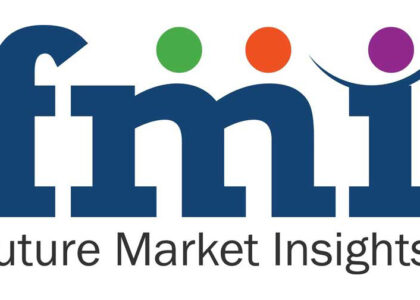The electric vehicle insulation market size is expected to be valued at USD 43,795.7 Million by 2033, up from USD 6,145.1 Million in 2023. Sales of electric vehicle insulation are projected to grow at a CAGR of 21.7% over the estimated period, according to research by Future Market Insights.
Over the forecast period, market growth is anticipated to be driven by favourable government initiatives to encourage the usage of green cars. The industry will also be fuelled by a rise in demand for battery-powered EVs, which is caused by strict government rules on car emissions. Governments all around the world are offering incentives to encourage the use of electric cars since doing so cuts down on pollution and oil use.
Request for a Sample of this Research Report
https://www.futuremarketinsights.com/reports/sample/rep-gb-15858
The raw material manufacturers adopted forward integration to manufacture insulating products, resulting in an excessive amount of forward integration on the market. Companies in the electric vehicle insulation sector employ captive consumption to reduce production costs. The companies now have the opportunity to expand their reach and enter new application markets.
Market dominance is mostly in the control of major companies with extensive value chain integration. As the market is so sensitive to prices, firms frequently compare their prices. Because of increased consumer demand for improved energy efficiency and acoustic insulation as well as expanding consumer awareness of vehicle safety, the market is expected to rise favourably.
Key Takeaways from the Electric Vehicle Insulation Market Report:
- The United States is anticipated to have a 9.3% market share for electric vehicle insulation over the projected period. The United States is expected to keep up a steady rate of revenue growth.
- With an estimated 11.2% market share over the forecast period, Germany is anticipated to be the largest market.
- Europe is expected to see a moderate rate of revenue growth throughout the projected period. Initiatives and government support to increase creative activities linked to electric automobiles are predicted to play a major role in driving market revenue share.
- Due to increased fuel prices, more government efforts, and an increase in the use of smart mobility services, the market for electric vehicle insulation in China is predicted to grow at a CAGR of 16.8%.
- With a 0.6% market share in electric vehicle insulation, Japan is a significant participant in the Asia Pacific automotive industry.
- The electric vehicle insulation market in India is expected to have one of the biggest development potentials, with a CAGR of 32.6% during the forecast period.
- With a share of 41.6%, the segment of foamed plastic is predicted to dominate the market. The market for thermal interface materials used in electric car insulation is predicted to reach USD 300 million by 2033.
- The BEV sector is predicted to rule the electric vehicle insulation over the forecast period.
Who is Winning?
Key companies are focusing on product development and strategic collaborations to expand their product portfolios and get a firm presence in the global market. The firms are also focusing on developing unique insulating solutions for vehicles, increasing competition. The market is active because electric car insulation businesses are investing a lot of money in research and development to produce hybrid insulation solutions.
Another area of focus is enhancing the functionality and longevity of products. Among the notable companies analyzed in the global market report are Saint-Gobain, BASF SE, Zotefoams Plc, 3M, Va-Q-tec AG, Elmelin Ltd, Pyrophobic Systems Ltd., Morgan Advanced Materials, Autoneum, Illinois Tool Works Inc., and Von Roll.
Seize the Opportunity: Get Report Now for a Thorough Report
https://www.futuremarketinsights.com/checkout/15858
Recent Developments in the Electric Vehicle Insulation Market:
- Va-Q-tec AG, a German firm operating in the insulation sector, joined Hutchinson SA on March 8, 2021. To enhance the thermal management of aircraft and EVs, both firms will work together to produce a super-efficient insulating solution. Through the cooperation, Hutchinson products and VA-Q-tec VIPs are joined to carry out different Research and Development (R&D) projects for the production of energy-efficient batteries for the automobile sector and cabin insulation for the aviation industry.
- Alpha-Liner, a wheelhouse outer liner with several functions that decreases tire noise and makes vehicles quieter and lighter, was introduced on July 8, 2019, by Autoneum, a Swiss firm that manufactures vehicle acoustic and thermal insulation.
Electric Vehicle Insulation Market Segmentation:
By Material:
- Thermal Interface Material
- Ceramic
- Foamed plastic
By Insulation Type:
- Acoustic
- Thermal
- Electrical
By Application:
- Under the Hood & Battery Pack
- Interior
- Others
By End-use:
- BEV
- HEV
By Region:
- North America
- Latin America
- Asia Pacific
- Eastern Europe
- Western Europe
- Japan

